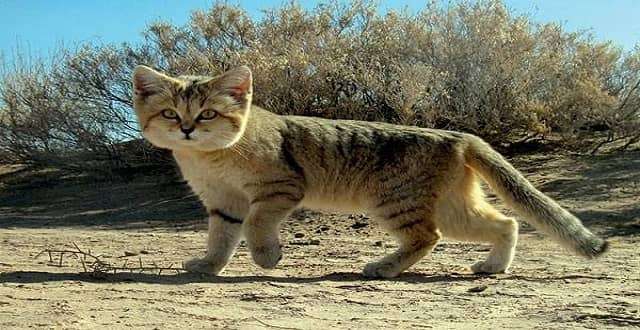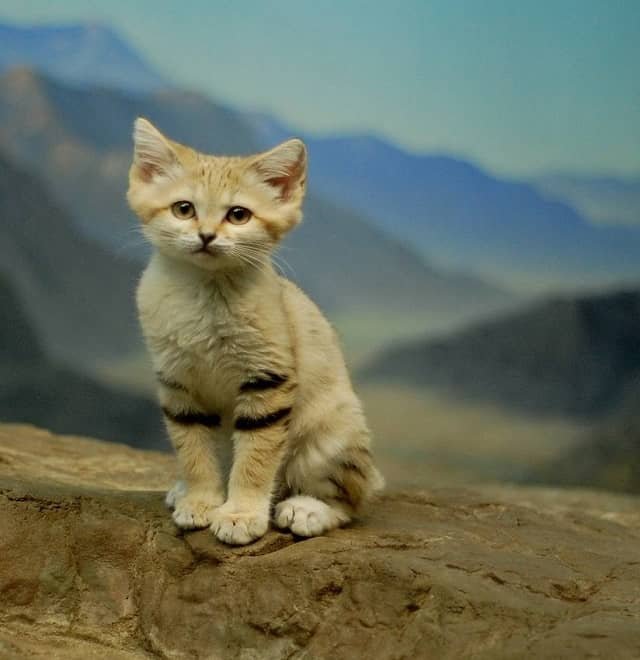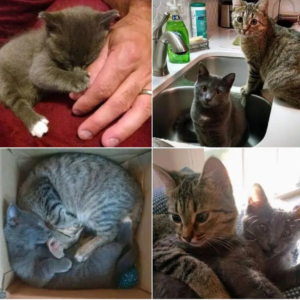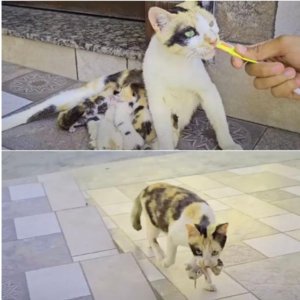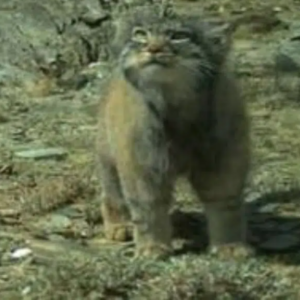The sand cat, also known as Felis margarita, is difficult if not almost impossible to find.
Also known as the dune cat, this desert feline is not only quiet and as sneaky as a house cat, but is evolutionary equipped to be stealth-like. These sand cats have a light coat that makes them difficult to detect in their desert habitat; they have special foot pads that leave almost no trace in the sand; not to mention, the felines also crouch down and close their eyes when any light is shined on them, making them invisible to eye tracking devices.
This might help to explain why researchers have had such a difficult time getting a handle on learning just how many of the cats there are living in the animal’s geographic range, which includes parts of north Africa, the Arabian Peninsula and also central Asia. In the United Arab Emirates, where a sand cat had not been spotted in the wild for over a decade, it was estimated all the way back in 2005 that less than 250 of the animals remained. However, no hard data as to their numbers was actually available. That’s why Shakeel Ahmed, who is an assistant scientist at Abu Dhabi’s Environment Agency and several of his colleagues decided to try and locate some of the endangered felines.
Working in the Baynouna protected areas, Roberta Pennington at The National reports the researchers set up a total of five camera traps in the preserve in March 2015. They then placed cans of chicken and fish-flavored cat food close to the motion-sensitive cameras. (Ahmed points out that a previous survey in Saudi Arabia showed the cats much preferred the chicken cat food, so they primarily used that.)
One month later, the researchers caught their first glimpse of a sand cat. They added four more cameras, and by December of last year they had collected a total of 46 images of three sand cats, two females and a male. The researchers describe their work in a paper recently which was published in The European Journal of Wildlife Research. Most of the sightings happened between midnight and 6 A.M., and about 40 percent of the sightings happened during the full moon. That’s because the cats sleep in dens during the entire day, coming out at night to hunt small reptiles and rodents.
The study will begin to give researchers a bit of an idea of the population density of the rare cats and help them figure out which habitats the felines prefer.
“It is clear that field research will all be extremely valuable in putting together conservation plans for the sand cats and their habitat, as well as pin-pointing those areas and their extent that may be turned into protected areas to conserve the cats,” Newby told Khaleeq. “Scientists need to be doing more research on how the sand cats live in order to create a suitable protected area.”
What’s another good reason to study sand cats? As an editorial in The National points out, these cats are beautiful (more like super-cute, really) and may serve as the poster animal for conservation efforts in the Arabian Peninsula.
“Given the rising popularity of cats around the world,” stated the editors, “our sand cats are the perfect face for this message of sustained conversation commitment.”
